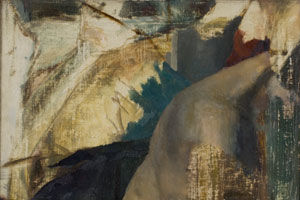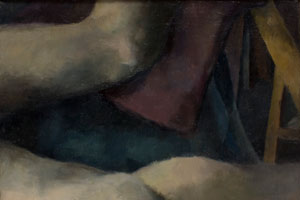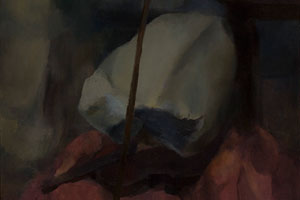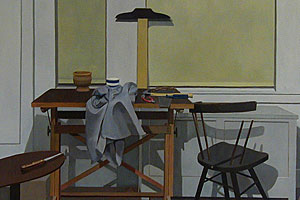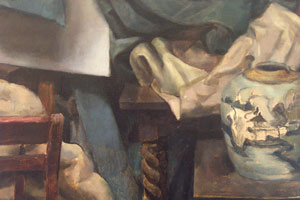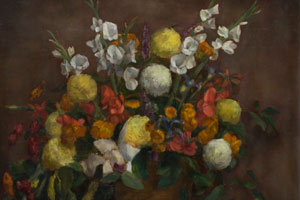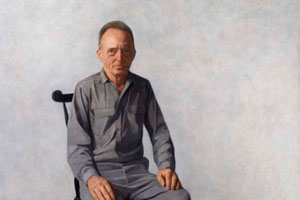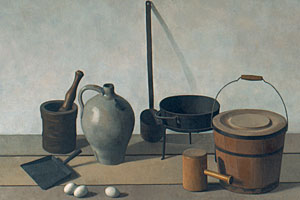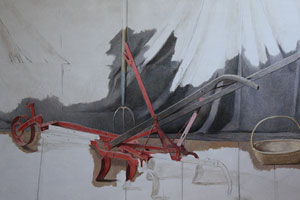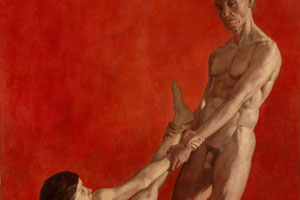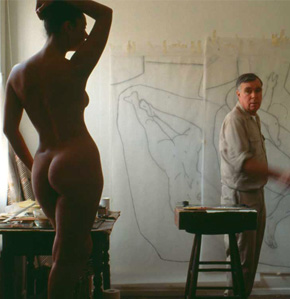
For more information
contact the Laurel Tracey Gallery
(732) 224-0760
email ltg@laureltraceygallery.com
Artist's Statement
"What to Do With the Human Figure?"
I was fortunate to have Edwin Dickinson in painting and Robert Beverly Hale in artistic anatomy, but what to do with the human figure? That was a wide-open question. No one believed in Venus and Apollo or the idealized figures of the past. Where to go? At a time when The New York School of Absract Expressionism was emerging, we who were interested in representation had to explore our subject starting at square one using the tools we had in hand, whether the subject involved the figure, landscape or still life.
Early in the Dickinson class I had discovered that when I detached myself from expectation and put down the shapes of color-value that I saw before me, there appeared, as if by a miracle, sensations of three dimensional form and space on the flat surface of the canvas. Dickinson recognized these discoveries as they happened. I was intensely excited. These sensations of form and space had come out of my own looking and not from formulas of the past. A door had opened and I knew it was open not just for me but for anyone using their eyes.
But what to do with these discoveries? As you can see from the Dickinson class Red Bandana and Legs, they came about by a different route than following a path, academic or otherwise, charted in the past.
Sensations of form and space matter. They have been the hallmark of the most moving representational artists of the past. They are what make the figures of Giotto and Masaccio, Donatello and Michelangelo come alive, the landscapes of Claude Lorraine and the still lifes of Chardin and Cézanne.
Where to go? There was no demarked path from Dickinson's observed color-spots to the life-sized anatomically functional figure I eventually would paint. I had to learn along the way what the problems were through the doing of it, and how to coordinate the "seeing" part of painting with conceptual knowledge. As the widow of the painter Robert Brackman put it, I "married Dickinson with Hale" by uniting Dickinson's color-spots with Hale's anatomy and geometric form-concepts.
This would result in an anatomically functional nude, taken from life, a figure that looked as if it could get up from its position on the canvas and move around.
By 1967, the time of my first exhibition at The Hirschl & Adler Galleries in New York, I could see in photographs of my paintings that when I was soft-edged and looking at the subject from unexpected angles, these qualities were apparent in the figure work, landscape and still life alike. The same would be true with later work when I became concerned with identifying the "what-it-is" of the subject, linear and more hard-edged, separating objects from their surrounding background.
The process of development outlined here has meant that there has been no stopping point along the way searching to crystallize into a style, or "look" with its attendant possibilities of achieving commercial success. This is true today, for I continue returning to my initial discoveries.
At an early stage I had explored what in Cézanne interested me, not for the sake of copying Cézanne but to see what fit in and what challenged these Dickinson class discoveries of form and space. Similarly, I looked at Renoir and Courbet.
By the early 1970's, specifically with the paintings of Mimi Scherb, Floyd Woodbeck, Shaker Objects and Pasture Road, I had arrived at a comparitive maturity.
In order to make this advance, along the way I had to separate the drawing from the painting process, including making use of underpainting. The following illustrates my current process.
I was fascinated by dance and the body in motion and how the body expresses its inner life through movement and gesture, even in repose. These considerations and others, such as proportion and the use of geometric grids in still life and landscape, became a part of my work.
There is a painter's logic in the chronological development of my work, and my website, www.franciscunningham.com has been divided into categories and ordered chronologically to suggest it. In addition there are links to YouTube and Facebook video presentations and to articles written for Linea, the publication of The Art Students League. Finally, it is all being put together in a forthcoming book entitled, The Naked and the Nude.

